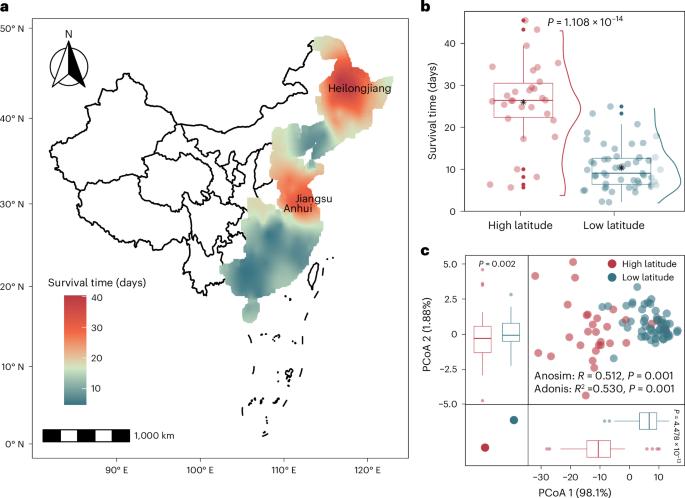Available phosphorus and opportunistic pathogens drive geographic variation in Escherichia coli O157:H7 survival in soils across eastern China
IF 21.9
Q1 FOOD SCIENCE & TECHNOLOGY
引用次数: 0
Abstract
The persistence of food-borne pathogens in soil can trigger disease outbreaks, highlighting the critical need to understand their survival patterns. Here we investigate the survival of Escherichia coli O157:H7, a notable food-borne pathogen, across 81 natural soils from eastern China using inoculation experiments. E. coli O157:H7 survival ranged from 2.0 days to 43.3 days in soils. The survival-time map revealed hotspots and geographical heterogeneity of E. coli O157:H7 survival across eastern China. Bioinformatics analysis and validation experiments identified available phosphorus as the major factor controlling E. coli O157:H7 survival, with higher available phosphorus content in soils extending their survival. Two opportunistic pathogens, Enterococcus faecium and Aerococcus viridans, facilitated E. coli O157:H7 survival by forming biofilm structures and cross-feeding, respectively. Climate factors showed mostly indirect correlations with E. coli O157:H7. These findings enhance our understanding of food-borne pathogen survival in soils and offer insights to inform agricultural practices for preventing and controlling outbreaks. Soil ecosystems are not only reservoirs of food-borne pathogens, but also transmitters through contaminated water and agricultural products. This study examines the survival of food-borne pathogen Escherichia coli O157:H7 across 81 natural soils from eastern China, mapping geographic survival patterns and identifying key abiotic and biotic drivers.


有效磷和条件致病菌驱动中国东部土壤中大肠杆菌O157:H7存活的地理差异
土壤中食源性病原体的持续存在可能引发疾病暴发,因此迫切需要了解其生存模式。本文采用接种试验研究了中国东部地区81种天然土壤中食源性致病菌大肠杆菌O157:H7的存活情况。大肠杆菌O157:H7在土壤中的存活时间从2.0天到43.3天不等。生存时间图揭示了中国东部地区大肠杆菌O157:H7的生存热点和地理异质性。生物信息学分析和验证实验表明,速效磷是控制大肠杆菌O157:H7存活的主要因素,土壤速效磷含量越高,其存活时间越长。两种条件致病菌屎肠球菌和绿气球菌分别通过形成生物膜结构和交叉摄食促进大肠杆菌O157:H7的存活。气候因子与大肠杆菌O157:H7呈间接相关。这些发现增强了我们对土壤中食源性病原体生存的理解,并为预防和控制疫情的农业实践提供了见解。
本文章由计算机程序翻译,如有差异,请以英文原文为准。
求助全文
约1分钟内获得全文
求助全文

 求助内容:
求助内容: 应助结果提醒方式:
应助结果提醒方式:


